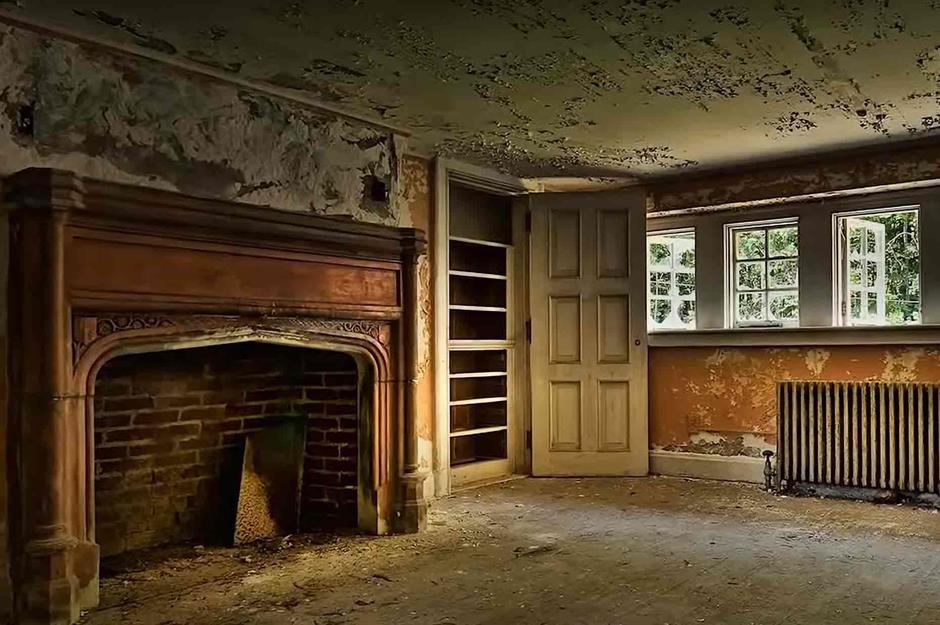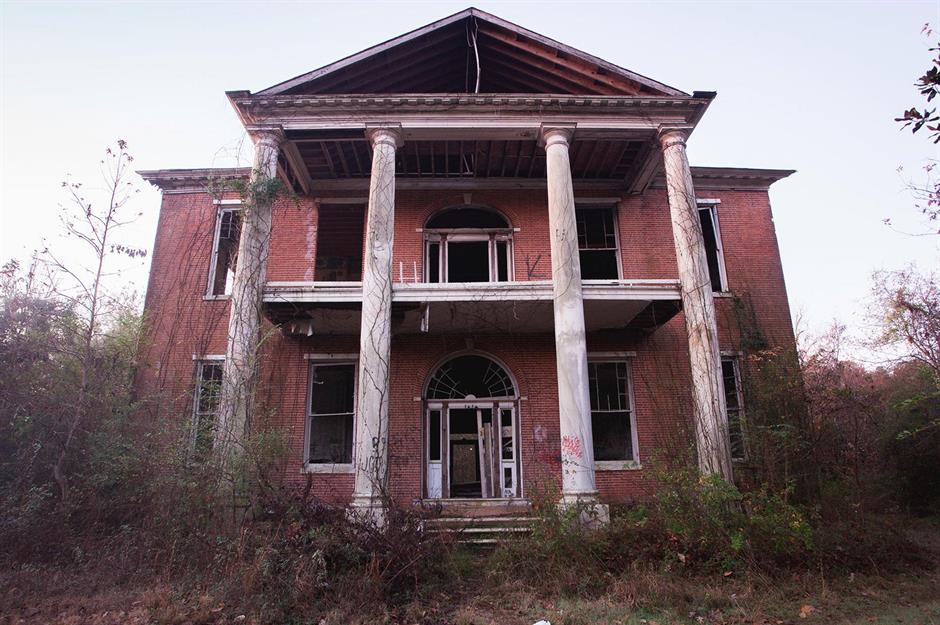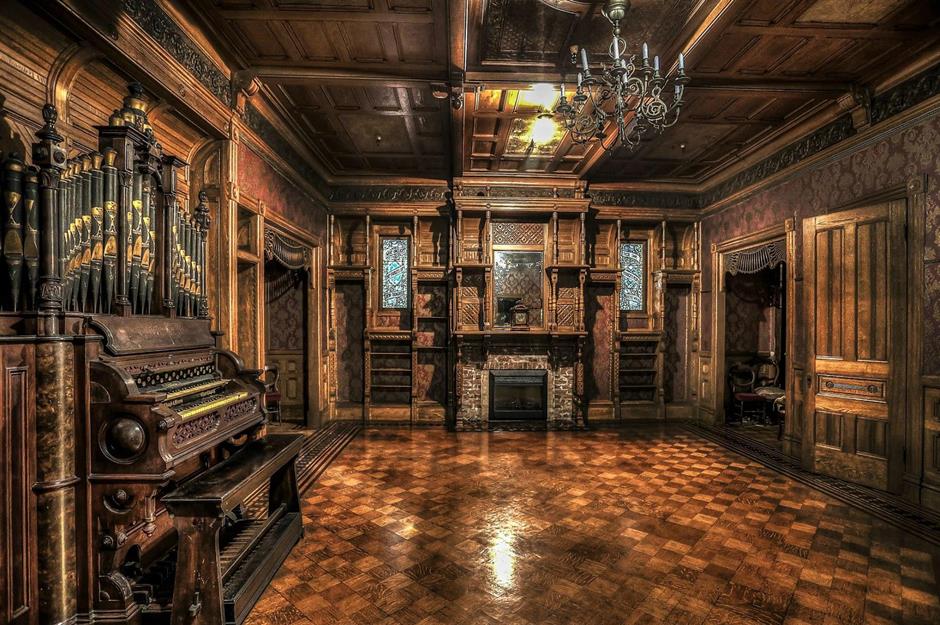Abandoned houses in America present a unique glimpse into the past, reflecting both architectural beauty and the stories of communities long forgotten. Over the decades, numerous factors have contributed to the abandonment of residential properties, leading to a landscape dotted with these intriguing structures. Economic decline remains one of the primary catalysts for the growing number of dilapidated homes. As industries falter and employment opportunities diminish in certain regions, families are often forced to relocate, leaving their residences behind.
Family issues also contribute significantly to the phenomenon of abandonment. Events such as divorce, the loss of a breadwinner, or disputes over property inheritance can result in homes being left unattended. In many cases, properties may become financially burdensome for the remaining occupants, prompting them to leave rather than invest in repairs and upkeep. Furthermore, urban decay has emerged as a critical factor in the rise of abandoned houses. In urban centers, neighborhoods can decline due to a combination of social issues, disinvestment, and the shifting economy, leaving once-vibrant communities with numerous unoccupied structures.

Beyond their physical presence, abandoned houses possess a profound cultural significance. They serve as reminders of bygone eras, holding memories of families and communities that once thrived within their walls. These sites invoke curiosity and evoke a sense of nostalgia, often inspiring photographers, urban explorers, and historians to investigate their past. The allure of abandoned homes lies not only in their historical context but also in the mystery of what led to their deterioration. This growing fascination with America’s abandoned houses bridges the past with the present, inviting further exploration and discussion in the sections that follow.
Across the United States, numerous abandoned houses have gained notoriety for their haunting beauty, rich history, and architectural significance. Notable among them is the Winchester Mystery House in San Jose, California. This sprawling Victorian mansion, constructed under the direction of Sarah Winchester, the widow of gun magnate William Wirt Winchester, boasts an astonishing 160 rooms. Legend has it that Winchester believed she was haunted by the ghosts of those killed by her husband’s rifles, leading to the house’s continuous, perplexing renovations. The architectural oddities, including staircases leading nowhere and doors that open into walls, inspire both intrigue and speculation about the mansion’s enigmatic past.
Another iconic site is the Michigan Central Station in Detroit. Once a bustling hub of railway travel, this Beaux-Arts train station fell into disrepair in the 1980s. Its grand façade is marked by crumbling bricks and shattered windows, yet it still captures the imagination of urban explorers and photographers. The towering clock tower serves as a symbol of a bygone era, representing the peak of railway travel in America. Plans for revitalization are underway, promising to restore this once-thriving structure to its former glory, thus preserving its place in architectural history.

In the vibrant city of New Orleans, the abandoned mansions stand as a testament to the city’s unique architectural heritage. These grand houses often reflect the rich history of the region, combining influences from French, Spanish, and Creole designs. The decay of these properties creates an atmosphere filled with stories of the past and serves as a canvas for urban legends and ghost tales. Their intriguing features, from ornate ironwork to sprawling verandas, continue to fascinate those interested in exploration and history.
These iconic abandoned houses contribute to the cultural tapestry of the United States, serving as reminders of the country’s architectural achievements and the stories that linger within their walls.
The Allure of Urban Exploration
Urban exploration, commonly referred to as urbex, has emerged as a compelling pastime for adventure enthusiasts, photographers, and history buffs alike. The thrill of discovering abandoned houses, factories, and schools provides a unique blend of adrenaline and nostalgia, often drawing explorers into the depths of forgotten places that tell stories of what once was. These sites, steeped in history and often filled with remnants of the past, evoke a sense of curiosity that continues to captivate individuals across various demographics.
As this trend has gained popularity, ethical considerations surrounding urban exploration have come to the forefront. One of the primary concerns involves the legality of accessing abandoned property. Many explorers navigate these challenges by obtaining permission when possible or adhering to local trespassing laws. Respecting the property and its surroundings is paramount—in many cases, explorers are reminded to leave no trace and avoid causing damage to the structures they explore. Such norms uphold the integrity of urban exploration as a responsible and respectful hobby.
Safety is another critical aspect of urban exploration. Abandoned sites can pose numerous hazards, including unstable structures, asbestos, and wildlife. As a result, individuals interested in urbex are often encouraged to take necessary precautions, including wearing appropriate safety gear and exploring in groups. Doing so enhances the overall experience, allowing explorers to share insights and assistance in navigating potentially perilous environments.
Furthermore, the rise of social media has significantly impacted the culture of urban exploration. Platforms such as Instagram and YouTube have enabled individuals to showcase their discoveries, sharing striking photographs and narratives that captivate audiences worldwide. This visibility has not only inspired others to take part in urbex but also fostered a sense of community among explorers. As more people engage in urban exploration, they contribute to an ever-growing archive of stories, experiences, and the preservation of history through the lens of forgotten spaces.
Preservation Efforts and the Future of Abandoned Houses
The preservation of abandoned houses has increasingly become a focal point for many organizations committed to historical restoration and community revitalization. These structures often serve as symbols of a community’s heritage, reflecting a rich narrative that should not be forgotten. Various non-profit organizations and local initiatives have emerged, aimed at restoring these homes and turning them into educational resources or community spaces. Preservation efforts focus on saving not just the buildings themselves but the stories they represent, contributing to an understanding of local history and culture.
One prominent example of such efforts is the National Trust for Historic Preservation, which actively supports initiatives across the country aimed at restoring abandoned properties. This organization provides financial support and advocacy for local communities, helping them navigate the complexities of restoration. Moreover, it promotes awareness about the significance of preserving these structures as part of America’s architectural heritage. In addition to these efforts, community volunteers often play a crucial role, working to maintain and restore these sites as a reflection of their shared identity.
The future of abandoned houses appears to be at a crossroads. On one hand, there is a growing trend towards redevelopment, as urban areas seek to modernize and accommodate new populations. This can lead to the demolition of historical sites. Conversely, the movement towards preservation highlights the importance of maintaining a tangible connection to the past. Balancing these two perspectives is essential for communities aiming to retain their historical identity while also progressing towards future growth. Ultimately, the fate of abandoned houses will depend on the collective efforts of individuals, organizations, and local governments committed to honoring their legacy. By embracing preservation, communities not only safeguard their history but also foster a sense of belonging and identity amidst modern challenges.
